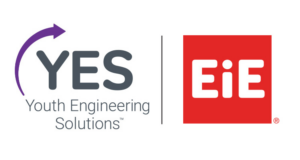Unit Overview
Youth engineer an assistive device that helps people with limited mobility put on their socks.
- Grades 3-5
- Setting: Enrichment
- 10 activities
- 45–60 minutes per activity
Standards alignment
We’ve developed each YES unit with careful attention to state and NGSS standards. YES units are also designed to integrate with the most popular elementary and middle school curricula. View Standards Alignment
Unit Map
Our funders
Major support for this project has been provided by the National Science Foundation.
